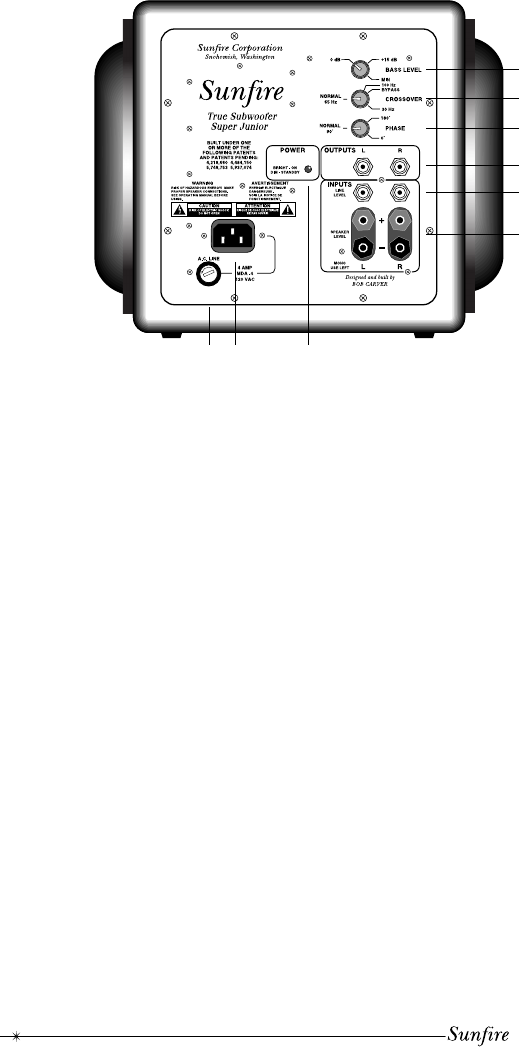
User's Manual
6
FUSE
1
2
3
4
5
6
87
9
1. Bass Level
This control lets you match the output
level of the subwoofer to the level of
your satellite/main speakers. The
subwoofer output will increase as this
control is rotated clockwise. When you
have just installed your system, turn
this down first before turning on your
subwoofer. This will prevent any loud
surprises.
2. Crossover Frequency
This controls the high frequency cutoff
point. With the control set to the 100Hz
mark, the subwoofer will reproduce
frequencies up to 100 Hz. If the control
is set fully clockwise, the crossover is
bypassed and the subwoofer will
reproduce a wide frequency range.
With the control fully counter-clockwise
the subwoofer reproduces a narrow
range, up to 35 Hz.
Rotate the control until the bass
sounds natural. If the mid-bass sounds
natural but you want more low bass,
turn the control down a little, then turn
the Bass Level control up by about the
same amount. This increases the low-
bass output while leaving the mid-bass
output the same.
3. Phase Control
This control changes the relative phase
of the subwoofer with respect to your
other speakers. Use this control to help
blend the subwoofer with the rest of
your system. This is accomplished by
adjusting the control in small incre-
ments as you listen for the most bass
at your listening position. As a final
trim, readjust the Crossover Frequency
and Bass Level controls after the
phase has been set.
4. Outputs
Line level high-pass output signals are
available at these jacks. These outputs
are active whenever a signal is hooked
up to the inputs of the subwoofer. This
crossover is a passive network with a
fixed crossover frequency of 70 Hz and
a 6 dB per octave slope.
We recommend using this high-pass
function with main/satellite speakers
that are small and not designed to
reproduce low frequencies. If your
main speakers are capable of
operating full range, then you will not
need to use the high-pass function.
Control Panel Features


















